|
Our present age of obnoxious selfies and kitschy self-promotion campaigns have made it difficult for Christian artists, musicians, and writers to promote their work without coming across as glory-seekers clamouring for the spotlight. What is the right course of action? Should Christian creators seek out public platforms for their work? In this recent article on TGC Canada, I tackle these questions! Click here.
0 Comments
1/6/2021 0 Comments A poem for Epiphany
Today is the Feast Day of Epiphany, the traditional date when the Magi arrived to see the Christ-child. This date in the church calendar celebrates the revelation of Jesus to the world (not just the people of Israel) as symbolized by the Gentile wise men who were "invited" from the East by a star. The Magi were distinguished foreigners who first go to Jerusalem, where the religious leaders pointed them to Bethlehem. Interestingly, the religious leaders misquote the prophecy from Micah (cp. Matthew 2:6 and Micah 5:2). Nevertheless, they get Bethlehem right, and so the Magi make the short jounrey from Jerusalem to Bethlehem to see this newborn king.
Below is a poem I wrote to capture the expansion of Christ's Kingdom to include all the world. I draw a parallel between the Gentile Egyptians in Exodus and the coming of the Gentile Magi in Matthew 2. In Exodus 12:35-36, the Egyptians gave the exiting Israelites precious gifts (gold and silver jewlery and fine linens), some of which was used to make the Ark of the Covenant and the furniture for the Tabernacle. The Tabernacle means "God dwells with us." In Matthew, the Gentile Magi also give gifts, willingly and in worship, to Immanuel--"God with us!" Like the Magi, we are invited to come, and like them, we receive more than we give. In this poem, I examine this shift from gift giving to recieving the greatest gift, Jesus Christ. He is God with us. 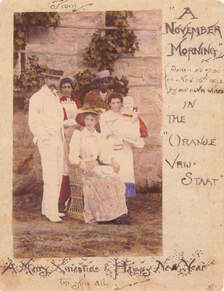 1892 Christmas card with a coloured photo of the Tolkien family in Bloemfontein, sent to relatives in Birmingham, England (Public domain). 1892 Christmas card with a coloured photo of the Tolkien family in Bloemfontein, sent to relatives in Birmingham, England (Public domain). Sunday, January 3, 1892 Bloemfontein, Orange Free State, Africa J.R.R. Tolkien was born 129 years ago on a warm Sunday morning in Bloemfontein, Orange Free State, in what is today known as South Africa. He was named John Ronald Reuel Tolkien by his father Arthur and his mother Mabel (née Suffield). In a letter home to the baby’s grandmother back in England, Arthur described his firstborn as a “beautiful little son” who arrived earlier than expected, although both the mother and the baby were healthy and well. Arthur goes on to say that the baby “has beautiful hands and ears (very long fingers), very light hair, ‘Tolkien’ eyes and a very distinctly ‘Suffield’ mouth.”[1] Two of Tolkien’s names were family names. “John” is the first name of both maternal and paternal grandfathers, John Suffield and John Tolkien. The name “Reuel” was taken from Arthur’s middle name, and derives from a Hebrew word meaning “friend of God.” Tolkien’s second name, “Ronald,” was the name given specifically to him by his parents, and this is the name they used when addressing him.[2] It is not commonly known that Tolkien, the famous English writer who gave the world hobbits, was actually born in Africa. Many biographers and inquisitors into the life of J.R.R. Tolkien have pondered the degree to which his life in South Africa shaped his writing and his outlook on life. Tolkien only lived in South Africa for only three years, however, so he retained only a handful of vivid memories from his time in Bloemfontein. One such memory was of his an African Christmas, with “blazing sun, drawn curtains and a drooping eucalyptus.”[3] Another half-remembered recollection was when Tolkien, as a toddler, stumbled upon a tarantula in the garden. The venomous spider bit Tolkien, and although he doesn’t remember the spider itself, he recalls running in terror to his nanny who sensibly sucked out the potentially lethal poison from the boy’s wound.[4] Later in life, Tolkien states that he had no negative feelings toward spiders as a result of this partially forgotten event; however, in his writing, Tolkien paints terrifying portraits of numerous villainous spiders in The Hobbit, The Lord of the Rings, and elsewhere in his legendarium.[5] Certainly one of the most gripping and terrifying scenes in The Two Towers—the second volume in The Lord of the Rings series—is the battle between Frodo and Samwise and the monstrous spider Shelob! Tolkien himself notes that one of the most powerful memories of his time in Africa was actually his departure from Bloemfontein. Bloemfontein was his first home, so the climate, terrain, and the flora and fauna of South Africa were the only aspects of the world that he knew during his early formative years. In a letter to his son Christopher many years later, he writes about the impact of leaving his first, known world: “My own rather sharp memory is probably due to the dislocation of all my childhood ‘pictures’ between 3 and 4 by leaving Africa.”[6] This feeling of dislocation and dislodgement from home is certainly a major theme in much of Tolkien’s later writing. Tolkien goes on to say that he sought to cope with the many setbacks in life by transforming these experiences “into another form and symbol with Morgoth and Orcs and the Eldalie (representing beauty and grace of life and artefact) and so on; and it has stood me in good stead in many hard years…”[7] Although Tolkien wasn’t fond of biographical investigation as a means to identify the “source” of his literary works, he admits to his son how this own life experiences provided the groundwork for the imaginative world of Middle Earth. For example, Tolkien’s early experiences of displacement from Africa to England—where his left both his home and his father—can be seen in The Lord of the Rings. The theme of dislocation is prominent in the lives of Tolkien’s major characters, such as Frodo and the hobbits displaced from the Shire, as well as Théoden and the Rohirrim who were forced to flee Meduseld, and Aragorn as a wandering ranger dislocated from Gondor. But, feelings of dislocation are also evident in the lives of minor characters like the Gondorians, as well as the elves mournfully leaving Middle Earth. The idea of dislocation goes beyond Tolkien’s early childhood experiences, however. Tolkien became a devout Christian at a young age, and he kept the faith “by the mercy of God”[8]—as he told his son Michael—remaining a devout follower of Christ for the rest of his life. His Christian and biblical worldview permeates all of his writing. In a letter to the English poet W.H. Auden, Tolkien writes that he wrote The Lord of the Rings “to be consonant with Christian thought and belief,” and in another letter he states that it is “a fundamentally religious and Catholic work; unconsciously so at first, but consciously in the revision.”[9] As is evident from Tolkien’s life and writing, his own faith in Christ was no mere addendum to his life; it was central. So it is no surprise that in Tolkien’s writing, the notion of dislocation is viewed through a deeper theological and Christian lens. Dislocation is a central biblical theme beginning in Genesis with the expulsion of Adam and Eve from Eden and humanity’s ensuing separation from the Creator.[10] The Bible shows that the ultimate antidote to humanity’s deep-seated sense of dislocation is faith in Christ—“a sure and steadfast anchor of the soul” (Hebrews 6:19). Belief in Christ ultimately provided Tolkien with a fixed refuge from the many uncertainties he had experienced in these early chapters of his life. These hardships were of no small consequence: moving from his home in Africa, losing both his father and mother by the age of 12, and experiencing the death of dear friends in the Great War by his mid-twenties. Reflecting on the turmoil of his early life, Tolkien writes in a letter to his son Michael about his fixed belief in Christ and who he claims to be: “It takes a fantastic will of unbelief to suppose that Jesus never really ‘happened’, and more to suppose that he did not say the things recorded of him—so incapable of being ‘invented’ by anyone in the world at that time: such as ‘before Abraham came to be I am’ (John viii). ‘He that hath seen me hath seen the Father’ (John ix); or the promulgation of the Blessed Sacrament in John v: ‘He that eateth my flesh and drinketh my blood hath eternal life’. We must therefore either believe in Him and in what he said and take the consequences; or reject him and take the consequences.”[11] Again, during Second World War, Tolkien writes of his faith sustaining him while separated from his son Christopher while the world was at war. Tolkien states “there is still some hope that things may be better for us, even on the temporal plane, in the mercy of God. And though we need all our natural human courage and guts […] and all our religious faith to face evil that may befall us (as it befalls others, if God wills) still we may pray and hope. I do.”[12] So as we face uncertain days in the New Year ahead, may we—like Tolkien—seek comfort and hope in Christ, who “will be the sure foundation for your times, a rich store of salvation and wisdom and knowledge” (Isaiah 33:6 NIV). Works Cited [1] Humphrey Carpenter, J.R.R. Tolkien: A Biography (London: Unwin Paperbacks, 1977), 25. [2] Humphrey Carpenter, J.R.R. Tolkien: A Biography (London: Unwin Paperbacks, 1977), 26 [3] J.R.R. Tolkien, “163. To W.H. Auden, 7 June 1955,” in Letters of J.R.R. Tolkien, ed. Humphrey Carpenter (London: Allen Unwin, 1981), 213. [4] Humphrey Carpenter, J.R.R. Tolkien: A Biography (London: Unwin Paperbacks, 1977), 27. [5] In The Hobbit, for example, Bilbo Baggins and the dwarves battle giant spiders in Mirkwood; in The Silmarillion, Tolkien gives us a gigantic and hideous spider-like creature called Ungoliant. [6] J.R.R. Tolkien, “73. To Christopher Tolkien, 10 June 1944,” in Letters of J.R.R. Tolkien, ed. Humphrey Carpenter (London: Allen Unwin, 1981), 85. [7] J.R.R. Tolkien, “73. To Christopher Tolkien, 10 June 1944,” in Letters of J.R.R. Tolkien, ed. Humphrey Carpenter (London: Allen Unwin, 1981), 85. [8] J.R.R. Tolkien, “250. To Michael Tolkien, 1 November 1963,” in Letters of J.R.R. Tolkien, ed. Humphrey Carpenter (London: Allen Unwin, 1981), 340. [9] J.R.R. Tolkien, “269. To W.H. Auden, 12 May 1965” and “142. To Robert Murray, 2 December, 1952” in Letters of J.R.R. Tolkien, ed. Humphrey Carpenter (London: Allen Unwin, 1981), 355, 172. [10] See Genesis 3:23–24. [11] J.R.R. Tolkien, “250. To Michael Tolkien, 1 November 1963,” in Letters of J.R.R. Tolkien, ed. Humphrey Carpenter (London: Allen Unwin, 1981), 338. [12] J.R.R. Tolkien, “64. To Christopher Tolkien, 30 April 1944,” in Letters of J.R.R. Tolkien, ed. Humphrey Carpenter (London: Allen Unwin, 1981), 76. 12/31/2020 0 Comments Our hope is not in 2021...
This past year has been challenging to say the least. Concerns about climate change, the environment, and stewarding the earth’s finite resources, to human rights concerns, to political and economic upheaval, to civil disobedience and sometimes violent protests, to a global pandemic… Many folks are looking forward to turning the page on their calendars and starting a fresh new year. But if hindsight is 20/20, then we should see clearly that our problems are much bigger and much harder to solve then a mere change in date. As my friend and publisher, Chance Faulkner, recently noted, humanity’s hope is not in 2021 but in Christ alone. Christ is our future hope, and he is our past and present hope. As we enter this new year, let us look to Christ, the only hope of the nations (Matthew 12:17–21; Isaiah 11:10; Isaiah 42:1; Isaiah 49:6, 51:4-5; Isaiah 61:4-5; Isaiah 61:6; 1 Peter 2:9-10). In him you will find peace and rest and justice in turbulent times; in him you will find light and joy in dark times.
Below is my poem “Violent Winds,” which appears in my collection of poems Undiminished Returns: Poems of a Christion Life (H&E Publishing, 2020). The poem is a prayer to God to rescue us not only from the challenges of our present world crisis but also from our self-made mess of sin and destruction. It is a fitting prayer for this New Year.
"Violent Winds," a sonnet, read by the author.
This poem is published in Undiminished Returns: Poems of a Christion Life (H&E Publishing, 2020), which is available for purchase from H&E online books, as well as from the author and on Amazon.ca.
Here is the final video from my advent poetry series. In this episode, I read two poems reflecting on Mary, the mother of Jesus. Within Protestant circles, Mary is often overlooked. However, she stands as a beautiful example of grace, humility, and faith. I hope and pray you will be blessed by this reflection. Merry Christmas!
12/18/2020 0 Comments An Advent poem: "A winter feast"
In this Christmas poem, "A winter feast," I embed a line from C.S. Lewis's The Lion, the Witch, and the Wardrobe, where he describes Narnia before the coming of Aslan as "always winter but never Christmas." My poem is about what our lives are like before Christ breaks in and changes our cold, dark December into a merry time of lights, beauty, joy, and peace. I hope you enjoy it!
For one week only (Monday, December 7 to Saturday, December 12), you can purchase directly from the author copies of Undiminished Returns: Poems of a Christian Life (H&E, 2020) and All Things New: Essays on Christianity, culture & the arts (Joshua Press, 2018). The price for a single copy of either book is $12. If you buy two or more, the price is $10 each. No shipping if pick-up or delivery is in Hamilton and area. Send an email to [email protected] to place your order. Note: Unfortunately, this sale does not apply to US or international sales. Please see H&E Publishing or Amazon.
CHRISTMAS SALE:All Things New: Essays on Christianity, culture & the arts
Joshua Press, 2018 SALE PRICE $12 ea. or $10 ea. for two or more copies This is a collection of essays on Christianity, culture & the arts, most of which appeared in Barnabas magazine over the past decade. The essays are split into six sections, focusing on art & creativity, the artist’s call, literature, music, cinema and faith & culture. The idea of the essays is to engage Christians to think through how their faith impacts their interaction and involvement with arts & culture, specifically in seeing the value of the imagination, the enrichment creativity brings to all of society and the delight the arts bring to daily life. 12/7/2020 0 Comments Christmas poems...
During a fresh morning snowfall, I took the opportunity to read a couple of my Advent poems from my new book of poetry, "Undiminished Returns: Poems of a Christian Life" (H&E Publishing 2020). Enjoy these wintery readings!
11/28/2020 0 Comments Tolkien, dragons, & Christmas
In this brief chat I reflect on J.R.R. Tolkien's fascination about dragons and about the season of Advent, when we remember the coming of the Great Dragon Slayer, Jesus Christ.
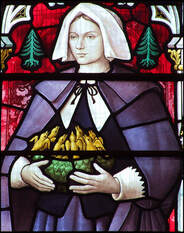 Detail of Anne Bradstreet from stained glass by Harry Grylls, 1948, installed at St Botolph’s church, Boston, Lincolnshire, United Kingdom. Detail of Anne Bradstreet from stained glass by Harry Grylls, 1948, installed at St Botolph’s church, Boston, Lincolnshire, United Kingdom. This weekend is the American Thanksgiving. Our friends to the south are experiencing one of the most challenging Thanksgivings in years, with social, economic, and political upheaval, coupled with a global pandemic and restrictions on personal liberties like travel and family gatherings. My brother and his family live in North Carolina, so it has been impossible for them to cross the border and visit loved ones in Canada. This reminded me of the earliest American settlers, the Pilgrims, who faced extreme hardship for many of their first autumns and winters. One particular Pilgrim that I have been reflecting on is the Puritan poet, Anne Bradstreet (1612–1672). She is on my mind because I am currently working on an annotated collection of her poems. Anne Bradstreet was a remarkable pioneer in two ways—she was a pioneering settler in 17th-century New England, helping to establish a new community in the New World. She was also a pioneering poet. Anne Bradstreet is known as America’s first published poet and she is also one of the first professional female poets in English literature. Despite these incredible “firsts,” she is not as well-known as some of her American contemporaries like William Bradford, John Winthrop, or Cotton Mather. Nor is she as well-known as her female poetic successors, such as Aphra Behn, Elizabeth Barrett Browning, the Brontë sisters, or Emily Dickinson. Although Bradstreet was born in England, the reason she holds the unique title of the first “published American poet” is because she was among the original English settlers during the early colonial period in America. She participated in the historic pilgrimage to build a “City upon a Hill,”[1] having left her home in England and travelled to America with her husband, parents, and siblings in 1630. Sailing with John Winthrop’s fleet across the Atlantic Ocean, Anne Bradstreet helped to establish a settlement in the rough and wild country of the newly formed Massachusetts Bay Colony. The famed “Plymouth Rock” Pilgrims had already made landfall in the New World ten years before Anne arrived on the east coast of North America. However, the continent was far from “settled,” and in spite of a decade of European presence, the area of the Massachusetts Bay Colony was still a relatively hostile and undeveloped wilderness. As an aspiring poet, Anne did not write a great deal during those early days in Massachusetts. No doubt this is due to the amount of work required to establish a new colony in a seemingly inhospitable and foreboding land. Anne and her family, along with the other Puritan settlers, faced several debilitating challenges upon their arrival. There were limited supplies of food, textiles, tools, building materials, and other necessities for survival. The previous settlers had suffered significant losses, including illnesses and death, and they were unable to plant sufficient crops or build enough houses for themselves, much less the newly arrived Winthrop pilgrims. The Bradstreet’s first winter in Massachusetts (1630–1631) is known as “the great starving time” when two hundred settlers ended up fleeing back to England and tragically two hundred more perished.[2] Early life in the New World was not only difficult but deadly.
During her years in the New World, Anne often experienced serious sicknesses. In a time when death was common both in the Old World and the New, Anne often assumed her illnesses would result in her death. She also experienced the loss of friends and loved ones, including her parents, grandchildren, and a daughter-in-law. Such frequent brushes with mortality gave Anne a sense of sober contemplation on the priorities of life, which she frequently reflects on in her poems. The theme of her life and her poetry can be summed up with the words of the Apostle Paul, who writes in Philippians 1:21, “For to me to live is Christ, and to die is gain.” Over the course of her life she also embodied the truth espoused by the Apostle Paul who asserts in 1 Timothy 6:6, “godliness with contentment is great gain” (KJV). Like the Apostle Paul, Bradstreet learned contentment in all circumstances: “I know how to be brought low, and I know how to abound. In any and every circumstance, I have learned the secret of facing plenty and hunger, abundance and need. I can do all things through him who strengthens me” (Philippians 4:12–13). Because of her Puritan theology grounded in the Sovereignty of God, she believed wholeheartedly in the goodness of her heavenly father both in this life and the next. This is why Anne and her fellow Puritans could make the best of this world, working hard to establish a new community—content with setbacks and grateful for successes—but they knew that this fallen earth was not their final home. Ultimately her greatest joys lie ahead beyond the grave. This is why Anne’s priorities—as her poems clearly show—were with delighting in God and living her life in a God-glorifying way. She knew how she must answer the rhetorical question posed by Jesus: “For what shall it profit a man, if he shall gain the whole world, and lose his own soul?” (Mark 8:36, KJV). Rather than fearing death and cowering from the wrath of God, Bradstreet’s contentment—whether in life or in death—is amplified by her absolute trust in the grace and goodness of God through Jesus Christ. This does not mean that she never struggled with doubts or fears—which she also reflects in her poetry—but it does mean that she lived with a grounded hope in God’s care both in this life and the next. A Poem of Thanksgiving by Anne BradstreetAnne Bradstreet wrote this poem in 1661 after her husband recovered from a serious illness. At a time when so many people perished due to illness, Anne is so thankful that her Lord and Saviour Jesus Christ not only carried her through her time of uncertainty, but also healed her husband. Notes:
[1] This famous phrase is from John Winthrop’s sermon written on board the Arbella in 1630. He and his company of English Puritans were seeking to establish a new, model community (“City upon a Hill”) as a beacon of hope for the world and a fulfilment of Jesus’ call to Christians to be “the light of the world. A city set on a hill, cannot be hid” (Matthew 5:14). [2] The Works of Anne Bradstreet. Edited by Jeannine Henley (Cambridge, Massachusetts, Harvard UP, 2010), xlvi. [3] Anne Bradstreet, “To My Dear Children” in Poems of Mrs. Anne Bradstreet (1612-1672): Together with Her Prose Remains (London, UK: FORGOTTEN Books, 2012), 315. [4] Anne Bradstreet, “To My Dear Children” in Poems of Mrs. Anne Bradstreet (1612-1672): Together with Her Prose Remains (London, UK: FORGOTTEN Books, 2012), 315. Check out my chat with Cody Kaufmann on the Poetry Piper Podcast! I count it a great privilege to be a guest on Cody's podcast. In this episode, we talk about poetry, pipes, my new book of poems, and all sorts of tantalizing tidbits... "Episode 7 - Jeremy W Johnston." Be sure to subscribe, listen to his other episodes, and keep tuning in for future podcasts!
10/4/2020 0 Comments When poems take shape...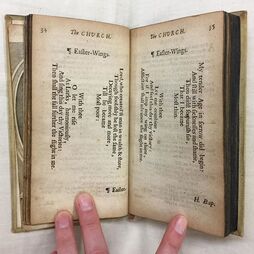 In this short chat, I discuss the poet George Herbert and a couple of his concrete poems. Concrete poetry is a form of poetry where the words on the page are shaped to align with the meaning of the poem. We also take a close look at my own concrete poem, "A Cruciform King," as we consider this interplay between the arrangement of words and the meaning conveyed by the poem. "A Cruciform King" and other poems are published in my book Undiminished Returns: Poems of a Christian Life released by H&E Publishers (2020). Here's the link to order! In this short chat, I discuss the history and importance of words, particularly the Word of God. I also show a few old copies of the Scriptures that I have in my study and I read a 14-line poem about Christ, the Incarnated Word. This poem (and others) are published in my book Undiminished Returns: Poems of a Christian Life released by H&E Publishers in the Autumn 2020. Here's the link to order! A big shout out to Malcolm Guite, the true master of these sorts of delightful library chats. His poetry and his video chats are the inspiration for the work that I am attempting to do here. Check out his series called "A Spell in the Library". They're truly brilliant!
Christians have a tendency to divide secular and sacred concerns; in fact, everything belongs to the Lord. “All that is in the heavens and in the earth is yours,” writes the author of Chronicles. “Yours is the kingdom, O Lord and you are exalted as head above all” (1 Chron 29:11). All aspects of creation—“all that is in the heavens and in the earth”—belong to God. So what does the Lordship of Christ mean for the world of arts and creativity? Should Christians ignore or shun the arts? Embrace or utilize the arts? Appreciate and enjoy the arts? I wrote this article--"Glorifying God through Arts & Culture"--to help us answer this question: what are Christians supposed to do with the arts? Published in edited form for TGC Canada, this article was originally published as the introduction to my book, All Things New: Essays on Christianity, culture & the arts.
|
Jeremy W. JohnstonChristian, husband, father, teacher, writer. Archives
June 2024
CategoriesAll ANNE BRADSTREET CHRISTMAS COVID 19 CS LEWIS DOUBT EASTER Family Worship FRANCIS SCHAEFFER GUEST BLOG POST JRR TOLKIEN MENTORING MONK'S GUIDE ON ARCHITECTURE ON DEATH ON EXCELLENCE ON HISTORY ON MUSIC ON OLD BOOKS ON POETRY ON THE ARTS ON WRITING PODCAST POETRY PRAYER THANKSGIVING TOLKIEN |
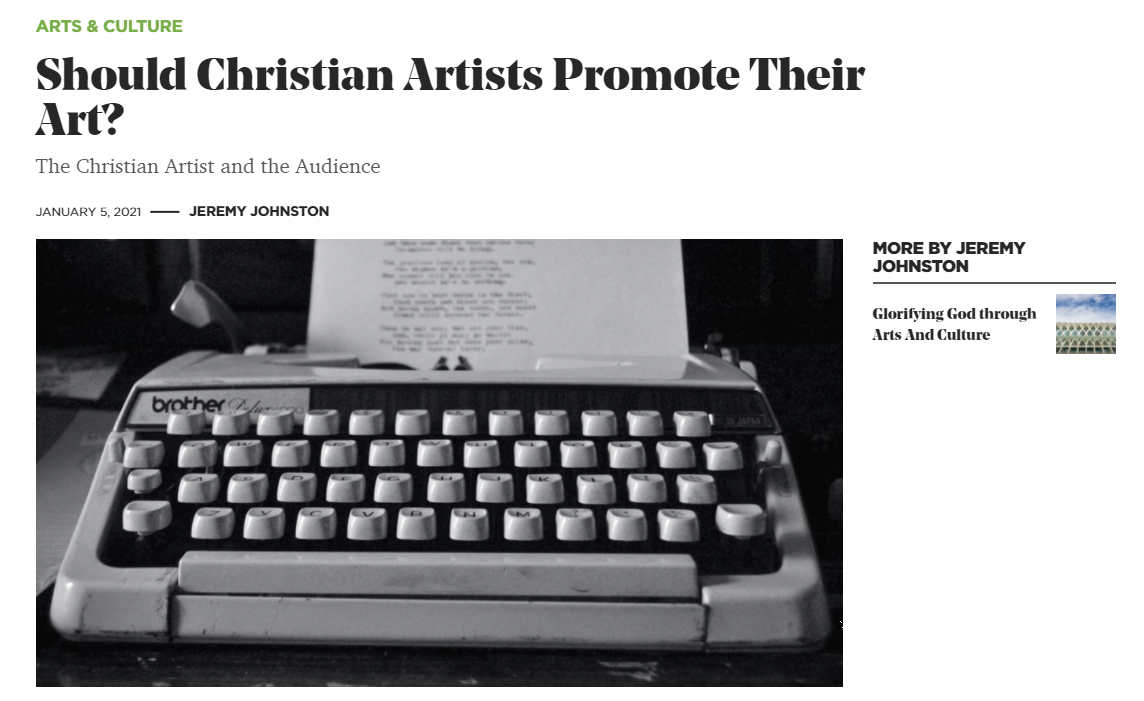


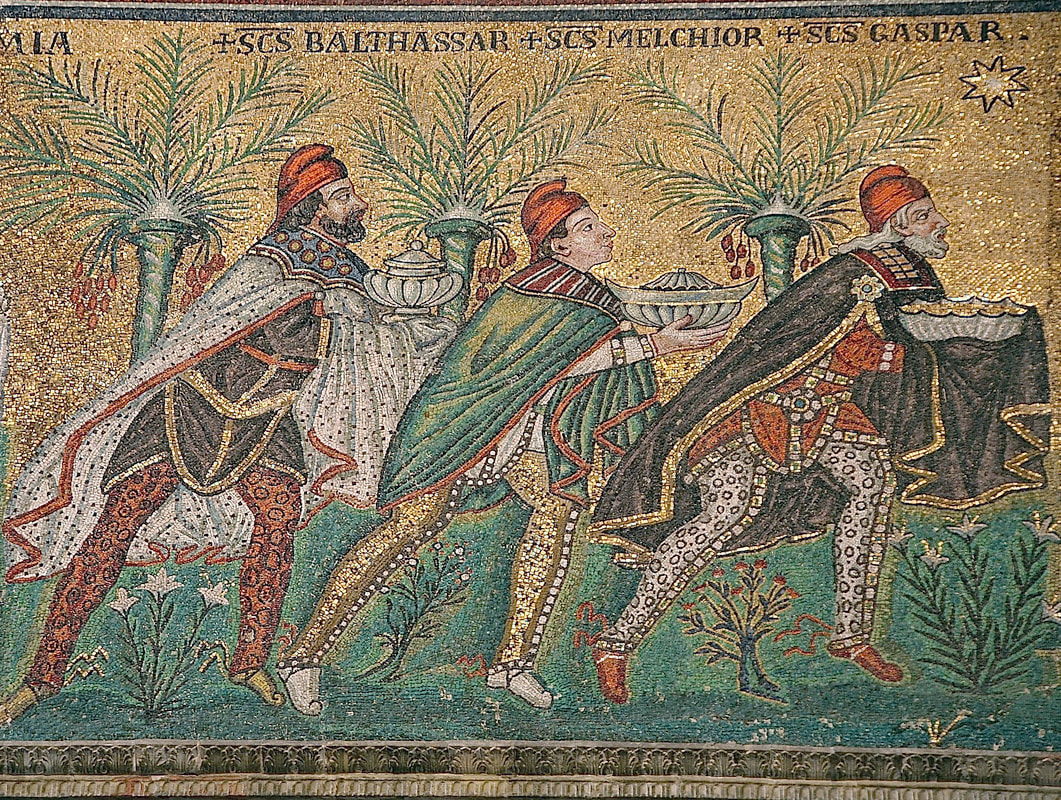

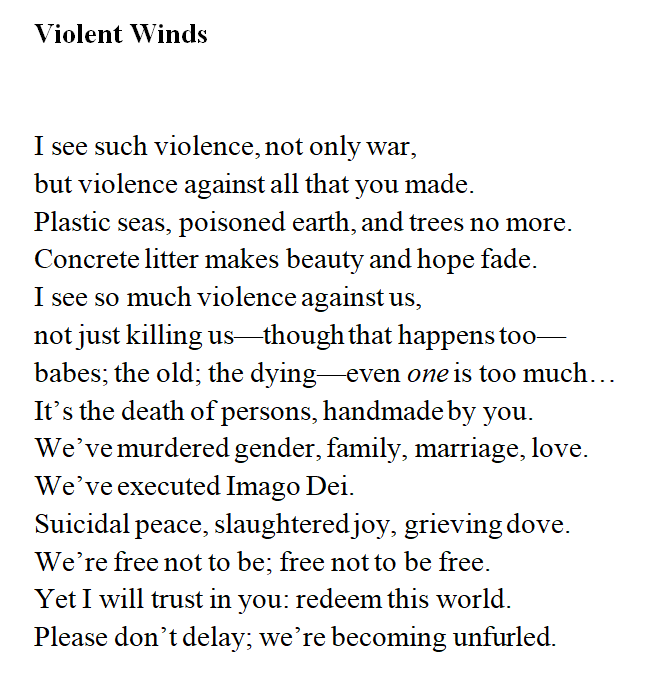
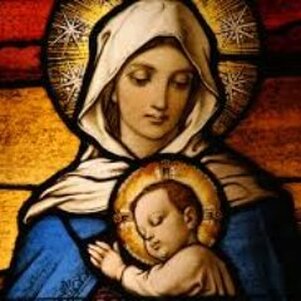
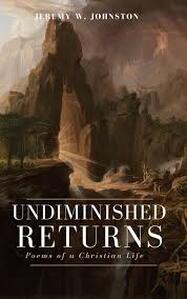
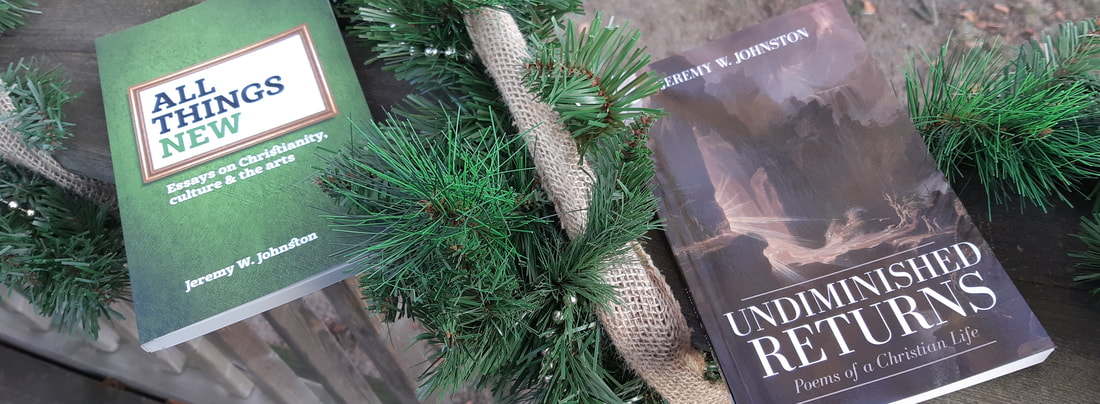
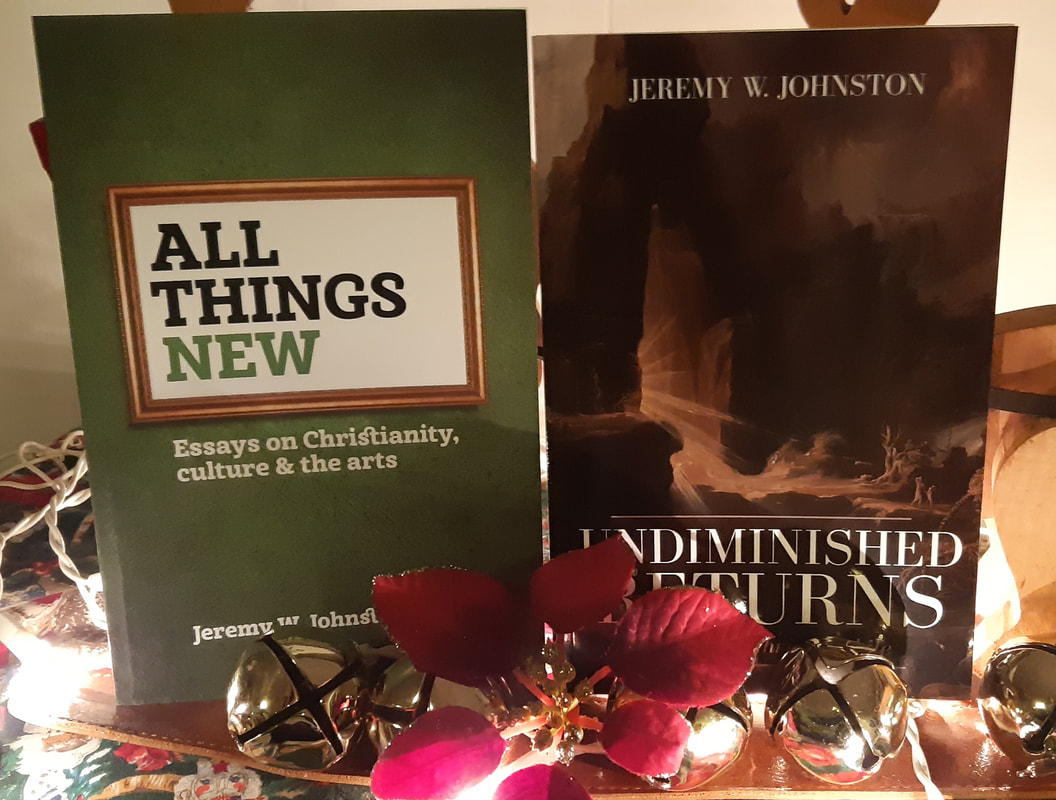

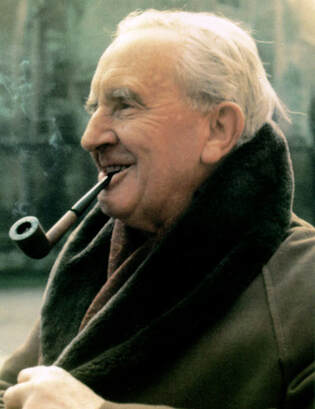
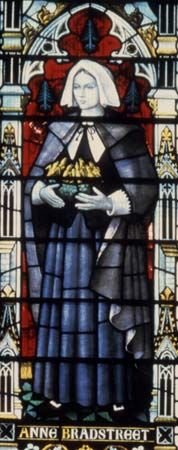
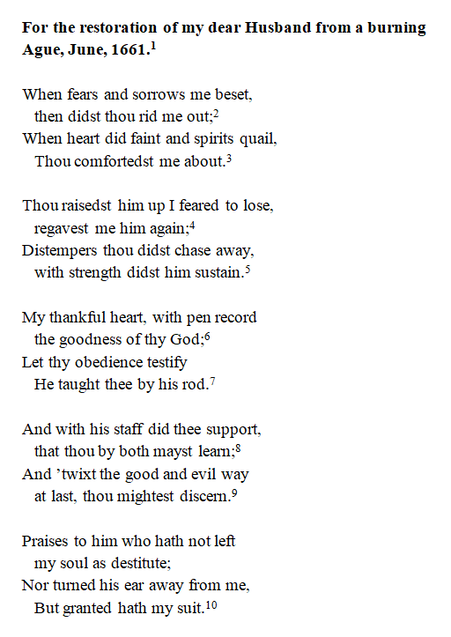
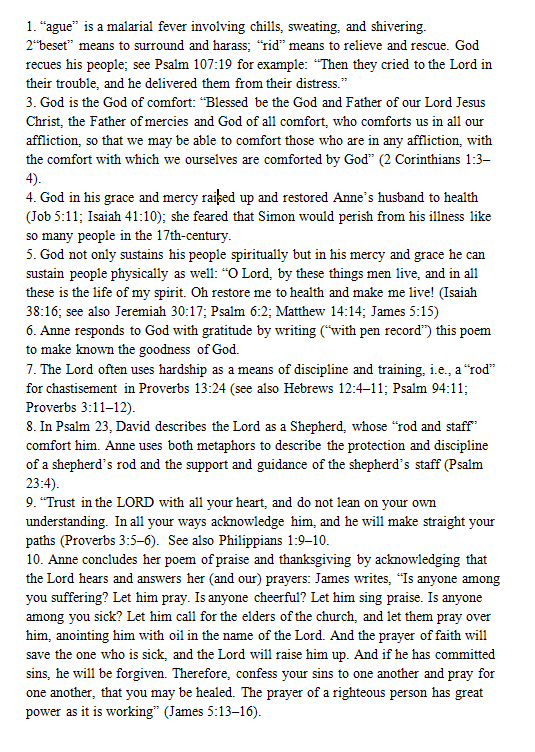


 RSS Feed
RSS Feed
